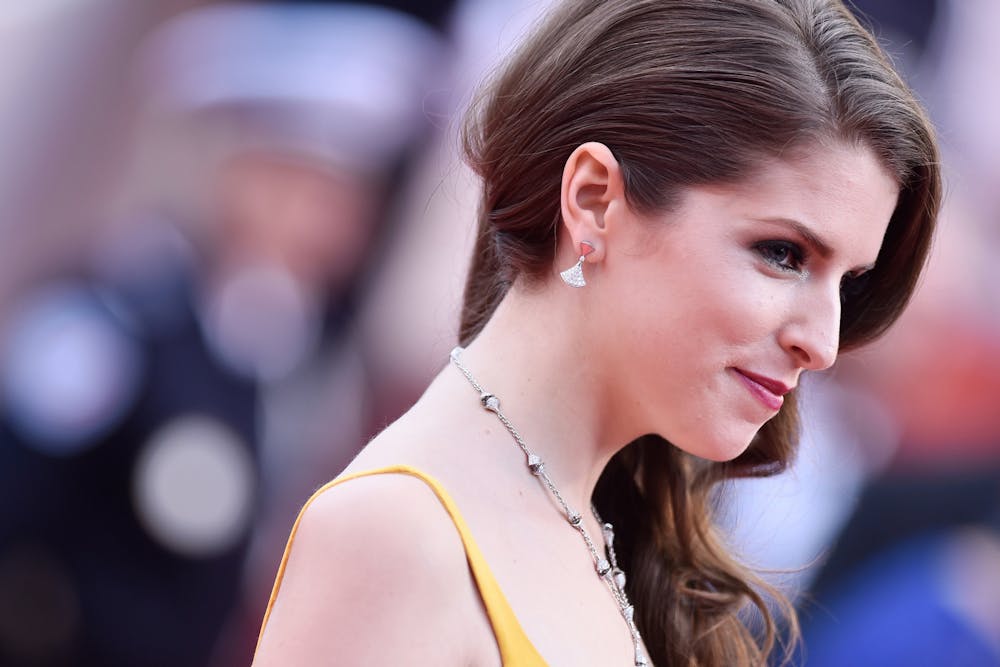***This review contains spoilers and mentions of sexual assault and murder.***
I love horror movies. My dad is a huge horror fan, so since I was younger, I’ve been indoctrinated by movies like “Night of the Living Dead” and “Halloween.” When I heard that Anna Kendrick was making her directorial debut with a horror movie named “Woman of the Hour,” I was shocked. Kendrick is an actress that I associate with movies like “Pitch Perfect” – I love “Pitch Perfect” so this is no shade – so this was unexpected, to say the least.
Upon viewing the trailer for “Woman of the Hour,” I knew that I had to watch it. My boyfriend and I cuddled up in bed with my laptop and pressed play. I was immediately entranced. “Woman of the Hour” takes place in the 1970s, and the main plot follows a struggling actress named Sheryl, played by Kendrick, who goes on a dating show in an attempt to gain recognition and fame. While on “The Dating Game,” she is matched with three men and decides to go on a date with serial killer Rodney Alcala, played by Daniel Zovatto.
The movie is based on the true story of Cheryl Bradshaw, who actually did match with Alcala on “The Dating Game” in 1978. The movie also explores other real crimes that Alcala committed during the 1970s. The movie opens with Alcala photographing a woman in the desert and asking her questions about a recent painful breakup. After getting her to open up, Alcala strangles her, revives her and strangles her again.
The story then focuses on Bradshaw, whose agent convinces her to go on a dating show called “The Dating Game” even though Bradshaw thinks it’s beneath her. Upon arriving on set, Bradshaw is objectified and talked down to, especially by show host Ed Burke, played by Tony Hale.
Once the show starts, Bradshaw begins by reading the sexist prewritten questions she was given. However, during a break in the show, she is inspired by the show’s makeup artist to go off script. The show resumes, and she asks the three bachelors a new question: “what are girls for?” The first two bachelors are confused and answer unsurely. The third bachelor, who the audience knows is Alcala, impresses Bradshaw by responding saying, “I guess I’d have to say that’s up to the girl.”
In between scenes of the main plot, the audience learns more about Alcala’s various rapes and murders. In 1971 New York City, a woman named Charlie is moving into a new apartment and asks Alcala for help after seeing him taking photos across the street. After helping her, he assaults and kills Charlie.
The audience also meets Amy, a teenage runaway, in 1979 San Gabriel. She meets Alcala, who promises her a career as a model if she allows him to photograph her. They drive into the desert, where Alcala photographs Amy before attacking her.
Back at “The Dating Game,” an audience member named Laura recognizes Alcala as the man who murdered her friend. She attempts to alert a security guard, who pretends to take her seriously and tricks her into waiting to speak to an “executive” of the show, who turns out to be a janitor.
After Bradshaw chooses Alcala, they win a trip to Carmel together and get drinks after the show. They are having a light-hearted conversation when Alcala’s mood quickly shifts after Bradshaw playfully teases him. He orders more drinks even after Bradshaw declines. The waitress, sensing Bradshaw’s hesitation, denies Alcala the drinks.
Bradshaw begins walking back to her car and Alcala insists on walking with her. He asks for her number and realizes that she gave him a fake number, becoming angry and threatening. Bradshaw anxiously races to her car and is almost attacked by Alcala at her car. However, a group of people exit the studio, interrupting the attack and Bradshaw escapes. Bradshaw then moves out of town.
The film ends by returning to runaway Amy. She wakes up in the desert tied up, bruised and partially nude. Alcala is crying next to her. She convinces him to untie her so they can go back to his apartment. When they stop at a gas station, she flees and calls the police. We then see Alcala being arrested.
“Woman of the Hour” is unlike any other horror or thriller movie I have ever seen. The tense and dramatic scenes were executed incredibly well in terms of both acting and direction. I was truly on the edge of my seat during multiple scenes in the movie.
The film highlights how predators take advantage of the societal conditioning women receive to be “nice” and accommodate men, encouraging them to ignore their discomfort and instincts. Alcala is a normal guy. He isn’t a boogeyman like Michael Myers – he’s portrayed as human, which makes the heinous acts he commits even more disturbing. We even see him cry during the film.
An important thing to note is that the movie is not centered on the male killer; it’s centered on his victims. Although we do see the end of their lives, these women are real people rather than a statistic or a name dropped in a true crime podcast.
“Woman of the Hour” is one of the best movies of the year. I highly recommend it to anyone who wants to see a new thriller with an incredibly engaging story.


The Slate welcomes thoughtful discussion on all of our stories, but please keep comments civil and on-topic. Read our full guidelines here.